When it comes to resilience, few creatures can rival dogs. Some breeds have evolved or been bred to endure the harshest environments—whether trekking through icy tundras, scaling rugged mountains, or surviving the scorching heat of deserts.
These dogs are not just loyal companions; they’re natural-born survivors, built with the strength, endurance, and adaptability to face what nature throws their way.
From thick, insulating coats that protect against subzero winds to lean, heat-resistant builds that help regulate body temperature in blazing climates, each of these breeds is perfectly equipped for the elements.
Their toughness isn’t just physical—it’s also mental. These dogs possess unwavering focus, courage, and determination, often thriving in conditions that would challenge even the hardiest humans.
In this article, we’ll explore the toughest dog breeds that can withstand brutal weather conditions—dogs that prove their mettle in snowstorms, sandstorms, and everything in between. They’re living proof that nature’s extremes can bring out the very best in canine strength and spirit.
Toughest Dog Breeds That Can Withstand Brutal Weather Conditions
1. Alaskan Malamute
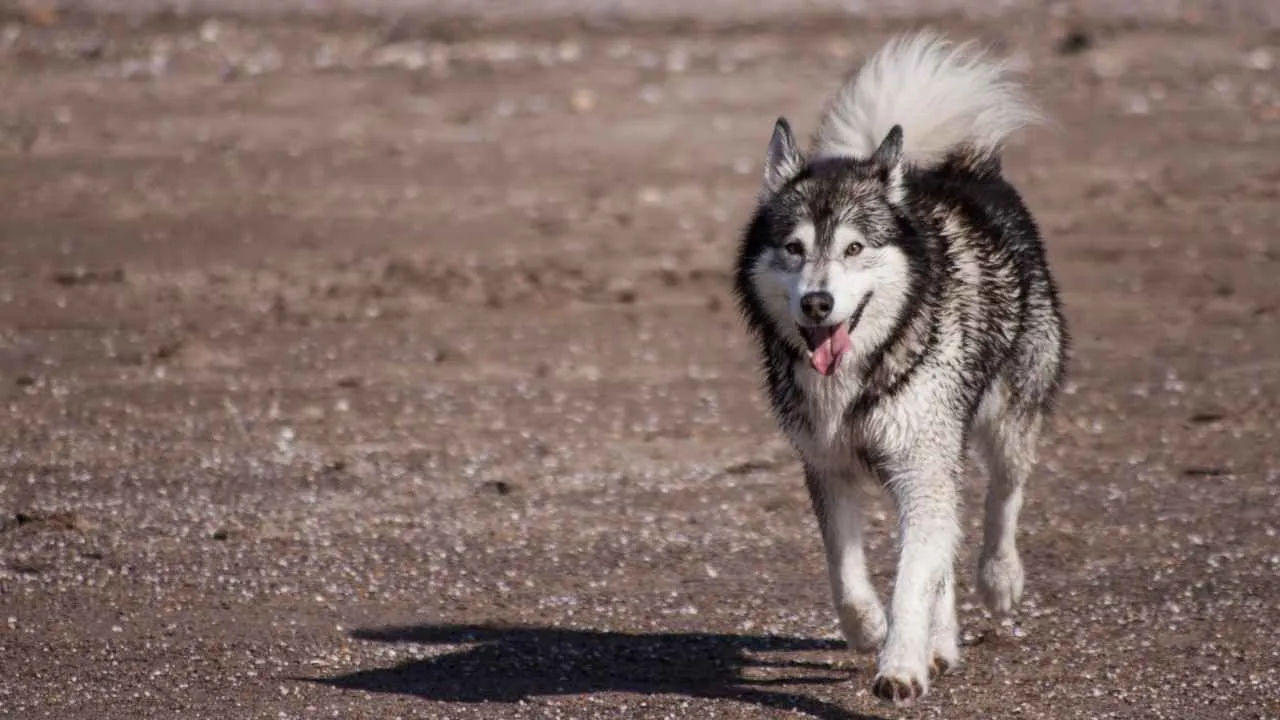
The Alaskan Malamute, often called the “freight dog of the Arctic,” is one of the toughest and most resilient breeds ever developed for cold climates.
According to the American Kennel Club, the Alaskan Malamute is a powerful and sturdy spitz-type working dog, known for its affectionate, loyal, and playful yet dignified nature.
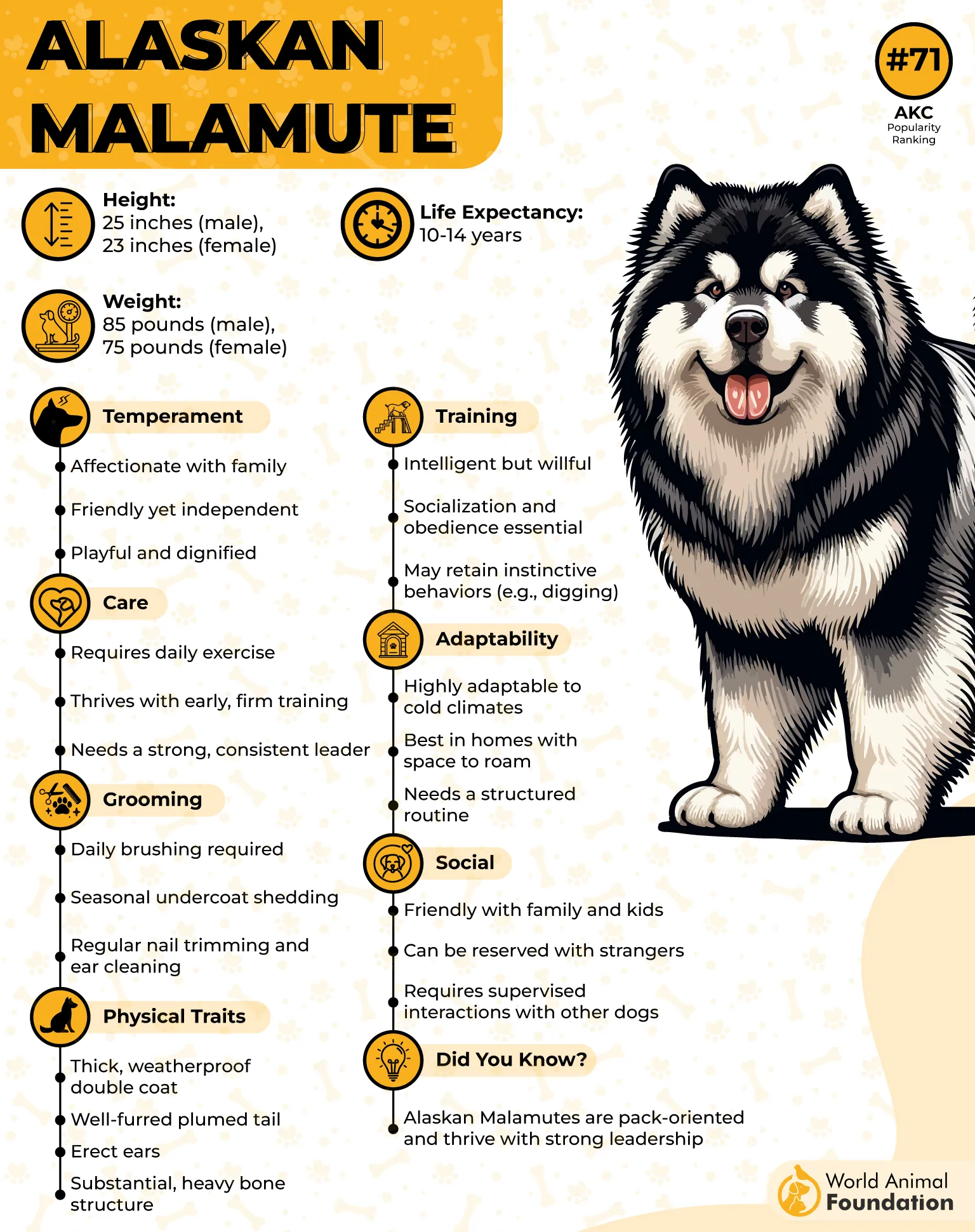
Their thick, weather-resistant fur features a coarse outer layer and a dense, oily undercoat that traps warmth while repelling moisture. This natural insulation allows Malamutes to work and even sleep directly on snow and ice without discomfort. Their curved, plumed tails serve a unique purpose, too—these dogs curl them over their noses to keep warm in subzero temperatures.
Despite their formidable strength, Alaskan Malamutes are affectionate and loyal companions. They thrive on teamwork, both in sledding groups and family life, making them resilient yet loving pets.

Fun fact: Alaskan Malamutes can withstand temperatures as low as −70°F, a testament to their remarkable adaptation to the harshest Arctic conditions.
2. Tibetan Mastiff

The Tibetan Mastiff, sometimes called the Do-Khyi, is an ancient guardian breed from the Himalayan mountains, renowned for its endurance in freezing climates.
According to PetMD, the Tibetan Mastiff is a large and powerful breed recognized for its impressive size and distinctive, lion-like appearance.
This majestic dog is covered in a dense double coat that shields it from subzero temperatures and fierce mountain winds.
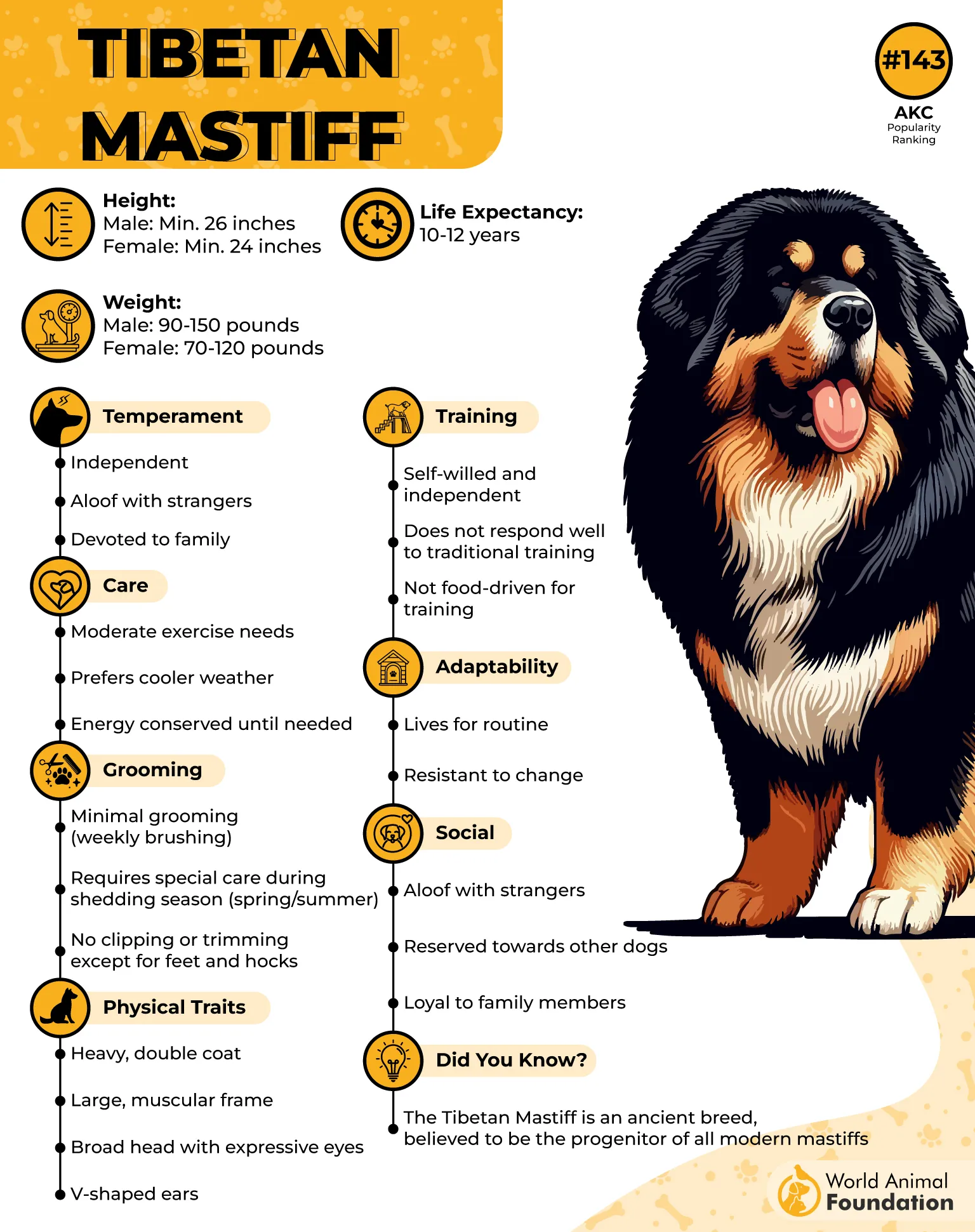
What sets the Tibetan Mastiff apart is its natural adaptation to cold—its thick undercoat acts as insulation, while its coarse outer coat repels snow and moisture. This breed thrives in frosty environments, conserving energy while maintaining strength and alertness in rugged terrain.
Despite their imposing stature, Tibetan Mastiffs are calm, loyal, and independent, showing great devotion to their families. Their territorial instincts make them exceptional watchdogs without unnecessary aggression.
Fun fact: This loyal dog breed is believed to be one of the oldest dog breeds still in existence, with references dating back to Marco Polo’s travels in the 13th century.
3. Great Pyrenees

The Great Pyrenees, also known as the Pyrenean Mountain Dog, is a majestic and powerful guardian bred to endure freezing temperatures and rugged terrain.
According to WebMD, the Great Pyrenees is an elegant and perceptive breed, admired for its gentle nature and keen awareness. Their size and endurance make them one of the most weather-resilient working dogs in the world.
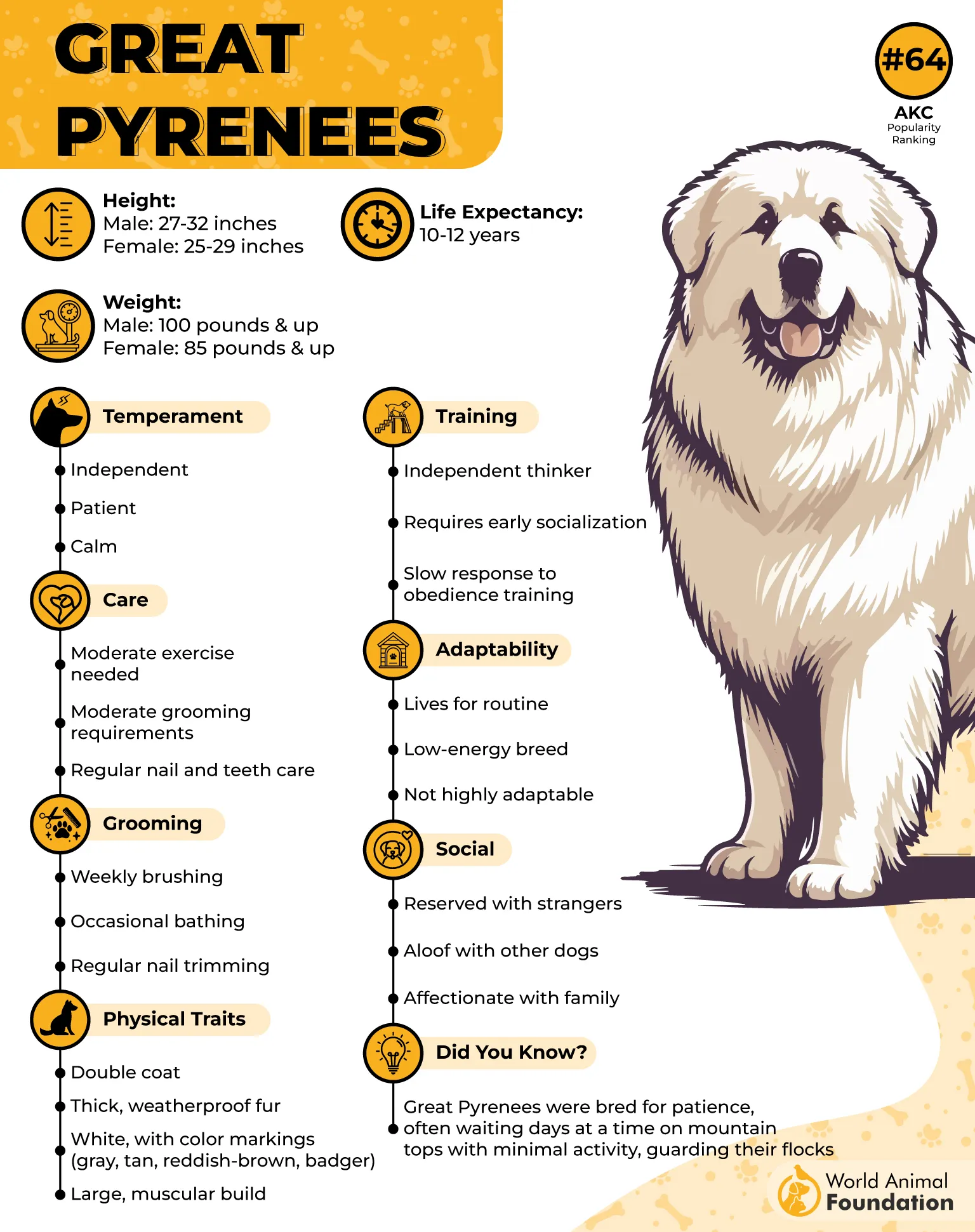
Their dense, water-resistant fur and undercoat provide exceptional insulation, allowing them to stay warm even during blizzards while protecting livestock or patrolling mountain ridges. Despite their strength, Great Pyrenees dogs remain calm, patient, and composed—a perfect mix of gentleness and grit.
These dogs also possess a natural guarding instinct, developed from centuries of protecting flocks from wolves and predators. Their independent nature helps them make quick decisions without human direction, vital for survival in remote, cold regions.
Fun fact: The Great Pyrenees’ white coat was intentionally bred to help shepherds distinguish them from wolves at night, making them as functional as they are beautiful.
4. Samoyed
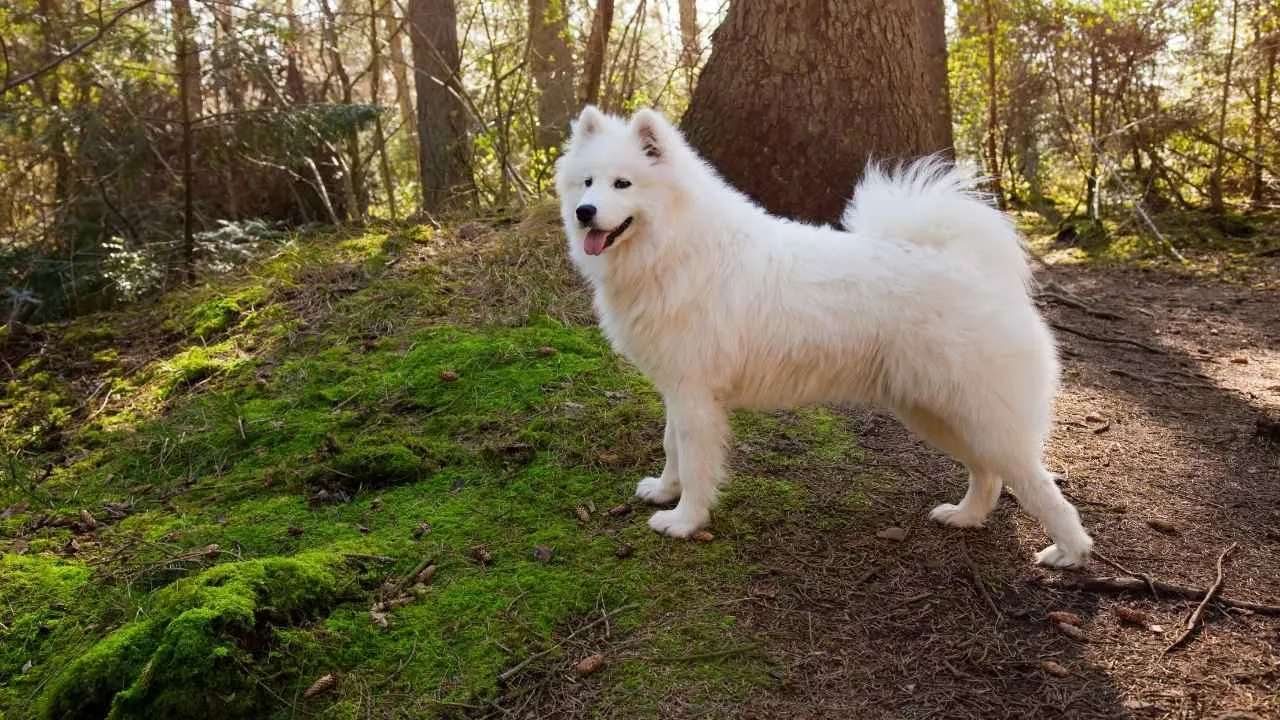
The Samoyed, also known as the “Sammie” or “Smiling Samoyed,” is a stunning Arctic breed recognized for its signature upturned lips that form a perpetual grin.
Originally bred by the Samoyede people of Siberia to herd reindeer and pull sleds, this resilient dog was designed to thrive in some of the coldest climates on Earth. Its thick, double-layered coat, consisting of a soft undercoat and coarse outer layer, acts as natural insulation against freezing winds and snow.
What gives these affectionate dogs incredible stamina outdoors is their boundless energy paired with a cooperative spirit. These dogs were historically relied upon for long, grueling journeys through icy tundra, demonstrating not just endurance but a joyful work ethic.
Their fluffy white coats repel moisture, allowing them to stay warm even when temperatures plummet below zero.
Despite their strength, Samoyeds are gentle, affectionate, and deeply social, thriving best in active families who enjoy outdoor adventures.
Fun fact: Queen Alexandra of Denmark helped popularize the Samoyed in Europe after falling in love with the breed—many modern Samoyeds can trace their lineage back to her royal kennels.
5. Siberian Husky
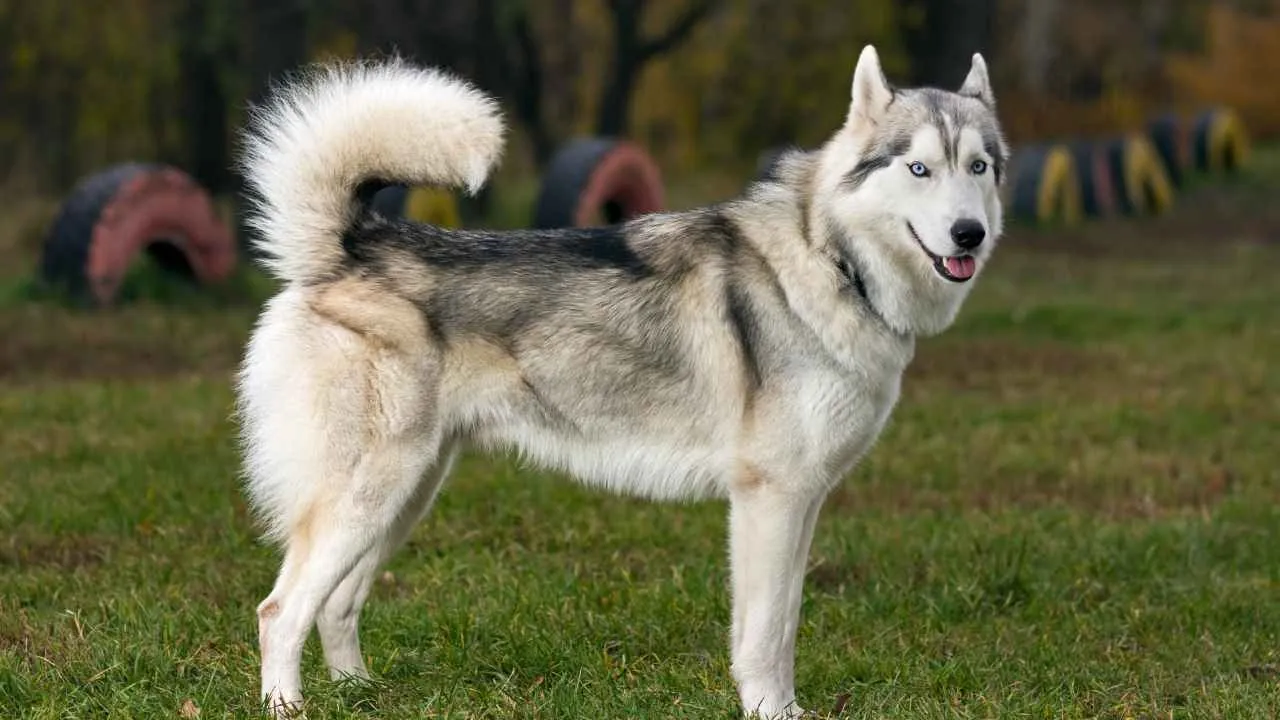
The Siberian Husky, sometimes referred to simply as the Husky, is a resilient working breed originating from the cold expanses of Siberia. Originally bred by the Chukchi people to pull sleds across frozen terrain, these dogs embody stamina, endurance, and hardiness.
What makes the Husky exceptional in extreme climates is its dense fur, which acts as natural insulation against temperatures well below freezing. Its almond-shaped eyes and furry tail—often curled over its nose during rest—help it conserve warmth in snowstorms. Despite their cold-weather prowess, Huskies are surprisingly adaptable and can adjust to moderate climates if properly cared for.
Their high energy and sharp intelligence make them ideal for outdoor enthusiasts who enjoy hiking, running, or other vigorous activities. They perform best with regular exercise and mental challenges that mimic their historical work ethic.
Fun fact: Siberian Huskies were key contributors to the 1925 Nome Serum Run, where they braved blizzards to deliver life-saving medicine across Alaska—cementing their reputation as one of the toughest breeds on Earth.
6. Akita
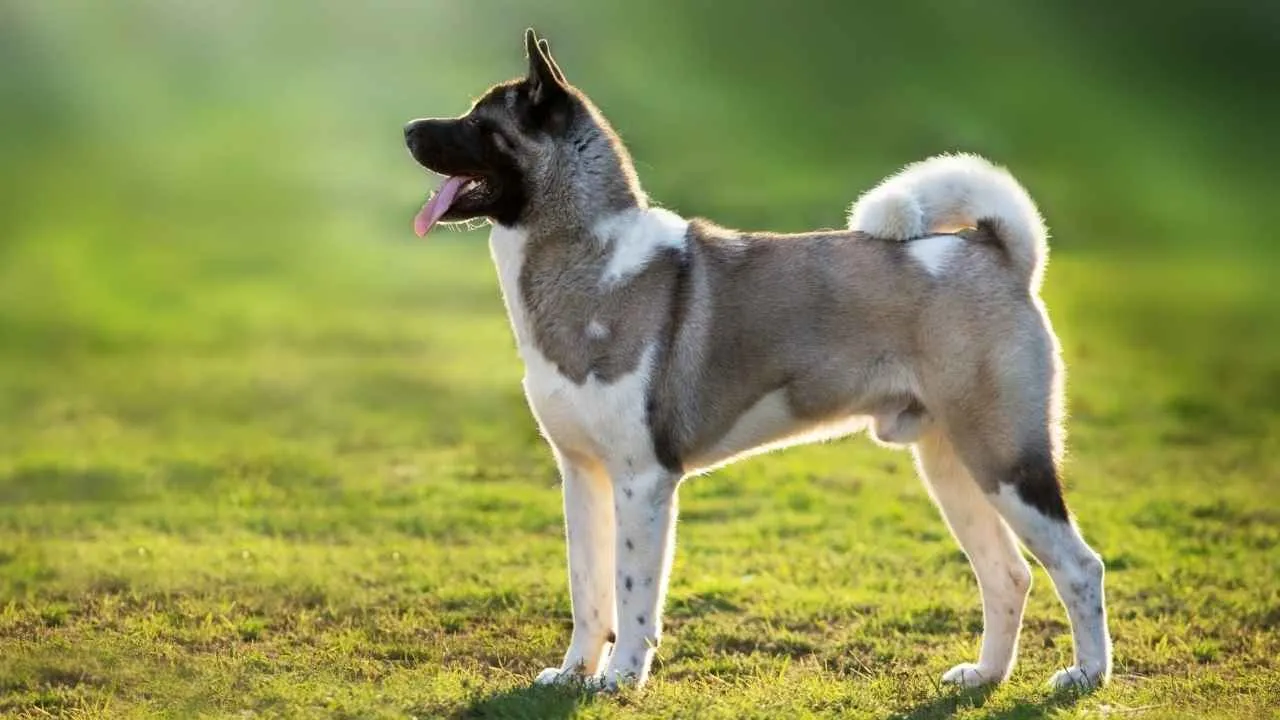
The Akita, also known as the Akita Inu, is a powerful and dignified breed originating from the snowy mountains of northern Japan.
Originally bred to hunt large game such as bears and boars, this dog developed a thick double coat, muscular build, and an unyielding spirit—traits that make it one of the toughest dogs in the world.
Bred in regions known for freezing winters, the Akita’s dense, weather-resistant coat provides exceptional insulation against the cold. Their double-layered fur, consisting of a soft undercoat and a coarse outer coat, allows them to thrive even in subzero conditions. This natural armor, paired with their stoic temperament, makes them ideal companions in harsh environments.
Their bravery and loyalty are legendary—Akitas were once trusted guardians of samurai families and protectors of Japanese nobility. They remain highly protective yet affectionate with their families, always alert but rarely aggressive without cause.
Fun fact: The story of Hachikō, an Akita who waited nine years for his deceased owner at Tokyo’s Shibuya Station, symbolizes the breed’s extraordinary loyalty and emotional strength.
7. Norwegian Elkhound

The Norwegian Elkhound, also known as the Elghund, is a hardy and fearless spitz-type breed that has thrived in the rugged Scandinavian wilderness for centuries.
With its dense, weather-resistant silver-gray coat, curled tail, and sturdy build, this medium-sized dog is perfectly suited for freezing mountain terrains and relentless snow.
What allows the Elkhound to withstand brutal weather is its double-layered coat—a coarse, water-repellent outer layer and a thick insulating undercoat that traps warmth even in subzero temperatures. Its compact, muscular body conserves heat efficiently while providing agility on icy ground.
Beyond its resilience, this breed is remarkably loyal and intelligent, traits that make it both a dependable worker and an affectionate family companion. Its alert nature also ensures it stands guard with quiet confidence, even in the most unforgiving environments.
Fun fact: The Norwegian Elkhound once sailed with the Vikings, serving as both a hunting partner and a loyal protector on long, perilous journeys through the cold seas.
Conclusion
Dogs that can thrive in extreme weather conditions are a testament to nature’s adaptability and resilience. Whether bred to endure harsh cold weather, extreme heat, or the unpredictable challenges of harsh winters, these powerful dogs are built for survival.
Their dense coats, thick fur, and natural endurance allow them to perform demanding tasks while remaining steadfast protectors and devoted companions. Breeds like the Australian Cattle Dog, with its protective nature and unmatched work ethic, excel in harsh conditions, proving that strength and loyalty often go paw in paw.
Many of these dogs—descendants of ancient breeds designed for labor and endurance—are more than just survivors; they’re also great family pets.
Their thick coats and thick fur coats shield them from extreme cold, while their adaptability helps them manage both warm weather and cooler weather with ease. These breeds embody balance—resilient enough for the world’s toughest climates yet gentle enough to be loving, dependable members of any household.


